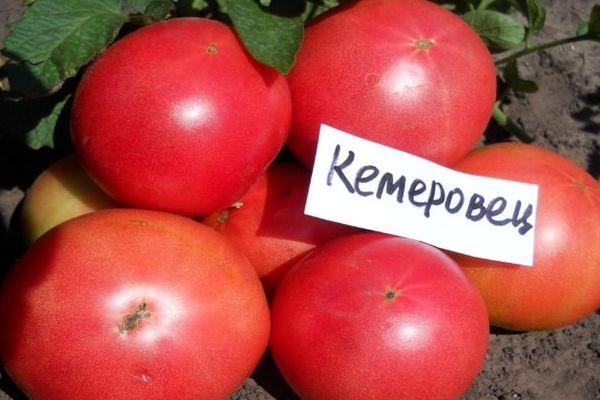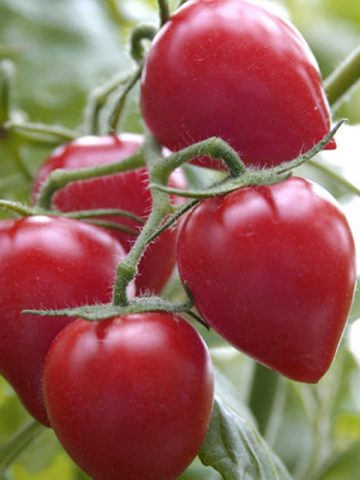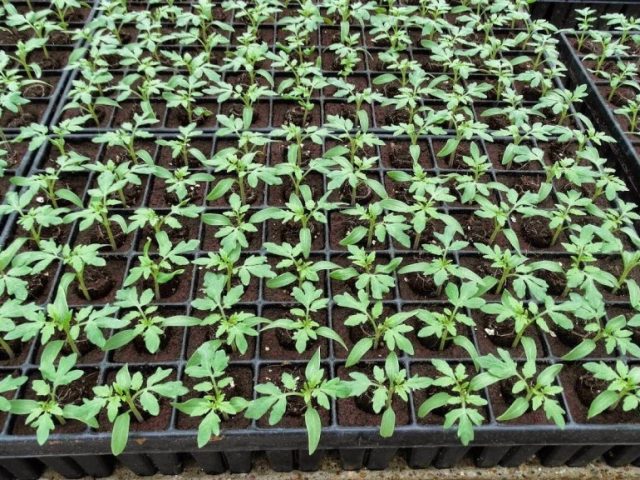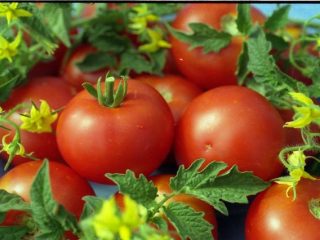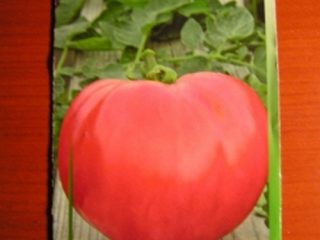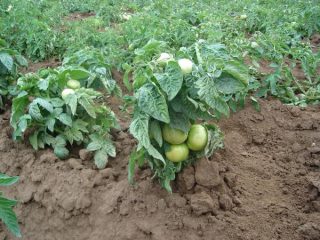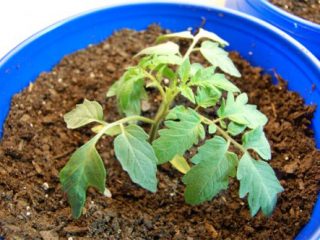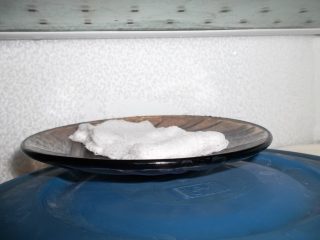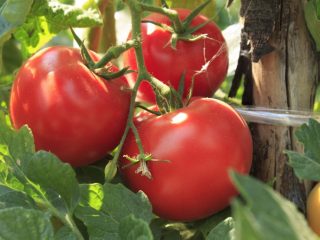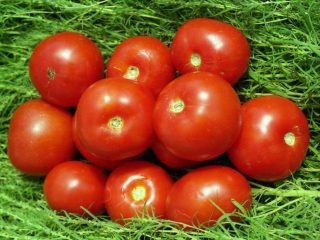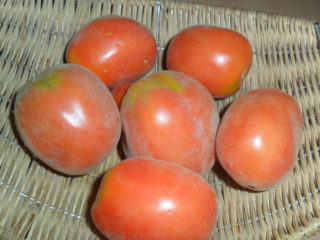Content
Tomato Kemerovo is a variety of Russian selection. Included in the State Register of Breeding Achievements since 2007. Recommended for cultivation in open ground under film covers on personal plots. Allowed for cultivation in the West Siberian region. It is an early ripening variety that is unpretentious in care.
Description of tomato Kemerovo
The Kemerovo tomato belongs to a standard plant with a determinant type of growth. Low-growing bushes do not reach a height of 80 cm. The leaves are medium in size and dark green in color. The foliage of the bush is not strong. The inflorescence has a simple stalk with an articulation. The stem is powerful and can bear a large number of fruits. According to reviews and photos of those who planted the Kemerovo tomato, it is recommended to tie the plant to a support.
Description of fruits
The fruits of the tomato variety Kemerovets are heart-shaped, with weak ribbing. Unripe tomatoes are light green with a dark spot at the stem. Ripe fruits have a pink-crimson color. The variety is multi-nested, with one fruit containing 6 or more nests. Fruit weight – from 60 to 104 g.
According to reviews and photos, Kemerovo tomatoes can reach a maximum weight of 150 g. The fruit pulp is dense. The taste is pleasant, tomato, with sweetness. Tomatoes of the Kemerovo variety are used for fresh consumption, but they are also ideal for whole-fruit canning.
Characteristics of tomato Kemerovo
The Kemerovets variety refers to tomatoes with early ripening periods. Reaches ripeness 3 months after emergence. The plant does not require formation and pinching.
Many ovaries form on a low bush. Fruits within several weeks. The yield is 3-5 kg per plant. The yield of marketable fruits is 93-100%. The variety of Siberian selection is characterized by cold resistance and resistance to late blight.
Advantages and disadvantages
The advantage of the Kemerovets tomato variety is the ability to grow them in open ground. The variety is acclimatized and suitable for cultivation in the Northern regions.
Other advantages of the Kemerovets tomato variety:
- a small bush that does not require much space on the site;
- high productivity;
- early ripening;
- fruits of high commercial quality;
- compact size tomatoes;
- the bush does not require shaping, which is especially suitable for beginning gardeners;
- fruits are easily transported;
- suitable for preservation;
- resistant to late blight.
There are no downsides to the Kemerovets tomato variety.
Growing rules
To obtain early production, the Kemerovets tomato variety is grown through seedlings. Determinate tomatoes are distinguished by the fact that they independently complete their growth with a flower brush. Therefore, during their cultivation, the top of the plant is not pinched. Determinate tomatoes lay their first flower cluster earlier than other varieties.The Kemerovo tomato is easy to grow and care for.
Sowing seeds for seedlings
Due to the small growth of the bush, the seedlings also turn out compact and strong. The cotyledonous knee is low, several cm long. The first flower raceme appears above the 6-7th leaf, the next ones - after several leaves.
The sowing time is calculated depending on the conditions to which the seedlings will be transferred. It will take 40-45 days to grow seedlings, to which time a week is added for sprouts to emerge and another week for the seedlings to adapt after picking.
The soil is disinfected by calcination or freezing. The soil is also disinfected using a fungicide; for this purpose, it is spilled with a biological solution several days before planting.
Coconut substrate is also suitable for growing tomato seedlings; pathogenic microflora is formed in it to a lesser extent. The coconut substrate always remains loose, which is important for the formation of a strong root system of plants.
Before sowing, seeds are germinated in a damp cloth, pre-soaked in growth stimulants. Sprouting helps identify living seeds and also allows sprouts to emerge quickly and evenly from the soil.
When sowing in a common planting container, the distance between seeds is kept at 2 cm. When grown in separate containers, two seeds are placed in one hole. Later, when both sprouts emerge, a stronger seedling is left. A weak plant is cut with disinfected scissors at soil level.
When planting in separate cups, tomato seedlings also need to be pricked.For initial planting, take small containers, because the soil, not occupied by roots, quickly rots.
Growing tomato seedlings of the Kemerovo variety:
- Seeds are planted in moist soil, deepening no more than 1 cm.
- The crops are covered with film and put in a warm place. Containers with crops should not be placed on heating devices.
- The film is periodically removed for ventilation.
- To moisten the crops, spray them with a fine spray bottle, but only when the soil dries.
- A few days after sowing, the first loops of seedlings appear. At this point, the shelter is removed and the containers are placed in places with natural or artificial lighting. In the first days, seedlings need to be illuminated for a full day; later, a 14-hour light regime is established.
- At the moment of emergence of seedlings, it is important to reduce the temperature of the seedlings to +18°C. This slows down the growth of the vegetative mass in favor of the beginning of the formation of the root system. Then the growing temperature is maintained in the range of +20°C... +22°C.
- When a pair of true leaves appear, the plants are transplanted into freer containers, in which they will be grown until transplanted into open ground.
Water the seedlings when the top layer of soil dries. When watering, it is necessary to soak the earthen ball completely. Once a month, tomatoes can be watered with fungicide solutions to prevent fungal diseases.
Transplanting seedlings
For transplanting into open ground, beds for Kemerovo tomatoes have been prepared since last season. Sites are selected, observing crop rotation. Favorable predecessors of nightshades are pumpkin varieties of vegetables and cabbage.
During autumn digging, mineral or organic fertilizers are added to the soil.The quantity of which depends on the initial soil fertility.
In open ground under film shelters, you can use a planting pattern of 30 by 40 cm. Plants are placed in a checkerboard pattern.
Hardened seedlings are transferred to the ground when constant positive temperatures above +10°C occur. To better warm the soil when growing tomatoes, high ridges are used. For a plant with many fruits, subsequent garter will be required, so the support stake is placed next to the planting in advance.
Before planting, water-replenishing watering of the soil is done. To do this, warm water is poured into the hole while it is absorbed. Then, at the bottom of the hole, a slurry of soil and water is mixed, and seedlings are planted in it. The seedlings are watered the day before planting so that they are better removed from the planting container. This will allow less damage to the roots, and the plant will take root faster in open ground. Then cover the planting with dry soil and press lightly. After planting, tomatoes are not watered for about 2 weeks.
Rules for proper care
Caring for the Kemerovo tomato variety is simple. The bush does not require pinching or shaping. During the growing season, several feedings are carried out using ash and herbal infusions. Potassium fertilizers are applied a week after planting. Potassium affects the formation and ripening of fruits. When using mineral fertilizers, do not use those that contain chlorine.
Water Kemerovets tomatoes with warm water without touching the green parts of the plant. To protect roots in open ground, mulch the soil.This method allows you to maintain the required level of moisture and protects the vegetative mass from contact with the soil. The soil under the mulch remains airy and there is less germination in it. weeds. For mulching, organic materials are used, for example, mown grass, compost, as well as artificial ones - agrofibre or film.
Conclusion
Tomato Kemerovo is an early, highly productive variety. Pink heart-shaped fruits are formed on the bush in large quantities. The bush does not require formation or removal of side shoots. Suitable for farming areas with difficult climates. Resistant to late blight.
